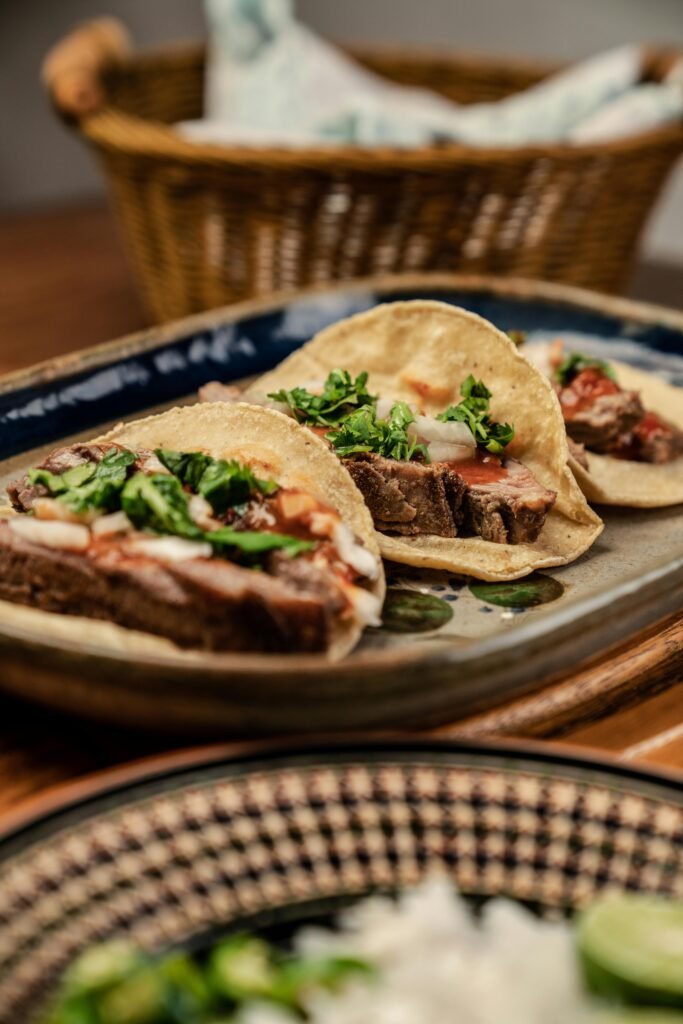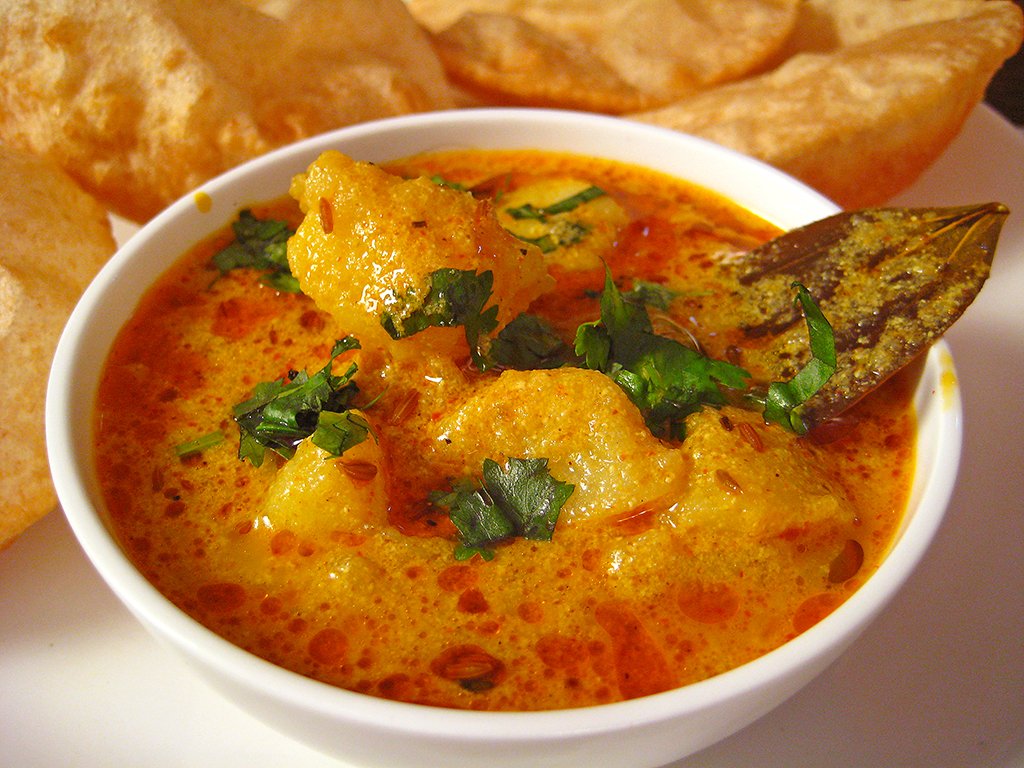Introduction to Global Culinary Favorites
The realm of global cuisine encompasses an extensive array of culinary traditions, each reflecting the unique history, geography, and culture of its region. Food preferences are often shaped by a variety of factors, including local ingredients, preparation techniques, and the social context in which meals are consumed. In an increasingly interconnected world, the appreciation of diverse food culture has broadened, leading to a growing interest in favorite dishes that transcend geographical boundaries.
Throughout history, certain dishes have emerged as universally loved options, cherished across continents and cultures. These standout meals are not only enjoyed for their flavors but for their ability to bring people together. The emotional connection people have with their favorite dishes often stems from shared experiences and family traditions, suggesting that food is much more than mere sustenance; it is a vital part of human interaction.
The concept of globally recognized meals invites exploration into various cooking techniques and flavor profiles, showcasing the rich tapestry of dishes that different cultures offer. As palates evolve and new culinary trends emerge, favorite dishes adapt, often incorporating elements from various influences. This fusion enhances the beauty of global cuisine, resulting in an exciting dining experience that celebrates both heritage and innovation.
This blog post will delve into five such beloved dishes that have garnered admiration from diners worldwide. Each dish represents a unique culinary heritage and shares its story, illustrating how food culture fosters connections. By examining these beloved meals, we aim to highlight the quintessential elements that make them favorites among gourmets and casual diners alike. Join us in this culinary journey as we explore the flavors and significance of these remarkable dishes.
Pizza: A Slice of Italian Heaven

Originating from the Italian city of Naples, pizza has grown to become one of the most cherished comfort foods worldwide. The history of this beloved dish dates back to the late 18th century, when it was initially a simple flatbread topped with tomatoes, cheese, and various other ingredients, serving as an affordable meal for the working class. The development of pizza coincided with the introduction of tomatoes from the Americas to Europe, which became pivotal in creating the classic flavors we associate with Italian cuisine today.
As an emblematic dish of Italian heritage, pizza exists in various forms, with each region offering distinctive styles and flavors. Two of the most notable pizza types are Neapolitan and Sicilian. Neapolitan pizza is characterized by its soft, elastic crust, topped with simple ingredients such as San Marzano tomatoes and fresh mozzarella, highlighting the authenticity of Italian cuisine. In contrast, Sicilian pizza features a thicker, rectangular crust often topped with a robust sauce, cheese, and a myriad of additional toppings, reflecting the heartiness of Sicilian cooking traditions.
The versatility of pizza is a significant reason for its enduring popularity. It can be enjoyed as a main course, making it an excellent choice for gatherings or casual meals at home. Its global appeal is further enhanced by the ability to customize toppings according to individual preferences, transforming it into a dish that accommodates a wide range of tastes and dietary requirements. From gourmet variations featuring exotic ingredients to classic configurations like Margherita, pizza continues to captivate food enthusiasts across cultures.
In essence, pizza has transcended its rustic origins to become an international symbol of comfort and culinary joy. Its connection to Italian cuisine, along with a variety of appealing pizza types, underscores its role as a staple dish enjoyed by millions around the globe.
Sushi: The Art of Japanese Cuisine

Sushi, a quintessential dish of Japanese cuisine, stems from ancient practices of preserving fish in fermented rice. Over the centuries, sushi has evolved into a globally celebrated culinary art form that emphasizes both flavor and aesthetics. Its roots can be traced back to regions of Japan and have developed into various styles, including Nigiri and Maki, each highlighting distinct preparation and presentation techniques.
Nigiri, a hand-formed rice delicacy topped with fresh fish, epitomizes the simplicity and precision characteristic of Japanese sushi. It showcases the quality of its ingredients, with the delicate pairing of vinegared rice and the freshness of seafood being paramount. Contrastingly, Maki, or rolled sushi, offers a more complex symphony of flavors and textures, combining fish, vegetables, and rice enveloped in a sheet of nori (seaweed). Both styles illustrate the diversity found within Japanese sushi, catering to varying palates and preferences.
The appeal of sushi extends beyond its taste; it is also a prime example of meticulous food presentation. Each piece is crafted with care, aiming to create an aesthetically pleasing experience that reflects the culinary philosophy of “washoku,” which values harmony and balance in food. According to this philosophy, sushi should not only be delicious but also visually enticing. This emphasis on visual appeal enhances the dining experience, inviting consumers to partake in both the flavors and the beauty that sushi presents.
As both an appetizer and a main course, sushi has garnered immense popularity worldwide. Restaurants specializing in Japanese sushi often focus on providing an authentic experience, highlighting the intricate techniques involved in sushi-making. The combination of artistic presentation and delightful taste exemplifies the essence of Japanese culinary traditions, ensuring that sushi remains one of the most cherished dishes around the globe.
Tacos: A Mexican Delight

Tacos are an iconic element of Mexican cuisine, celebrated not only for their fabulous flavors but also for their rich cultural significance. Originating from indigenous communities in Mexico, tacos have evolved into a beloved dish that transcends geographical borders. Each region within Mexico boasts its unique variations, showcasing the versatility of this culinary staple. From the fresh, zesty fish tacos of Baja California to the rich cochinita pibil found in Yucatán, taco variations are endless and cater to a wide array of tastes.
One of the most commendable aspects of tacos is their adaptability. They can be made with soft or hard shells, filled with a diverse range of ingredients, thereby appealing to a variety of dietary preferences. Traditional fillings often include marinated meats, grilled vegetables, and beans, but there are contemporary takes that introduce nontraditional elements like fusion flavors and gourmet toppings. As a quick snack or a hearty main course, tacos can fit seamlessly into any meal, making them an essential part of both casual and festive dining.
Culturally, tacos hold immense relevance in Mexican society. They are frequently enjoyed at celebrations, family gatherings, and as delicious street food, providing a sense of community and connection to Mexican heritage. Over the years, they have grown in popularity globally, leading to various adaptations and interpretations. Yet, regardless of the form they take, the essence of tacos remains tied to the values of sharing, hospitality, and tradition. Whether eaten in a bustling street market or a cozy restaurant, tacos continue to embody the spirit of Mexican cuisine, offering a taste of the culture and story behind them.
Curries: A Spicy Journey through Indian Cuisine

Indian cuisine is renowned for its diverse flavors and vibrant dishes, with curries being among the most cherished. Originating from the Indian subcontinent, curries encapsulate a rich history that reflects many cultural influences, ingredients, and cooking techniques. The term “curry” is a broad concept encompassing various dishes characterized by their use of spices and, often, a sauce or gravy. Each region in India brings its own unique interpretation of curry types, showcasing local ingredients and cooking traditions.
From the creamy and aromatic butter chicken of North India to the coconut milk-based curries of South India, every curry tells a story of its geographical lineage. This diversity in preparation methods reveals the significance of using distinct spice blends, which are fundamental in creating the signature flavor profiles that many have come to love. Spices such as turmeric, cumin, coriander, and garam masala are prevalent in many recipes, and they not only contribute flavors but also boast numerous health benefits.
Moreover, regional variations impact the heat levels and the type of ingredients used. For instance, curries in the coastal areas often highlight seafood and are typically milder, while those from the North might involve rich gravies and are spiced to appeal to local palates. Vegetarian curries are also an integral part of Indian cuisine, catering to a wide range of dietary preferences and further emphasizing the versatility of this dish.
Curries serve as a hearty main course, often accompanied by rice or flatbreads. This combination allows for an enjoyable dining experience, marrying the aromatic sauce with the texture of the sides. Overall, the global appreciation for Indian curries highlights their intricate flavors and the cultural significance behind them, making them a beloved component of culinary traditions worldwide.
5. Cheeseburgers: An American Classic

Cheeseburgers hold a prominent place in American cuisine, serving as an iconic representation of comfort food and fast food culture. This beloved dish, featuring a grilled beef patty topped with cheese, has evolved significantly since its inception in the early 20th century. The exact origins of the cheeseburger are somewhat disputed, with various claims attributing its creation to different American eateries in the 1920s. Nonetheless, it has solidified its status as an essential part of American culinary heritage.
The cheeseburger’s versatility is one of its key appeals, leading to a wide array of burger variations that cater to diverse palates across the globe. From the traditional all-American cheeseburger adorned with lettuce, tomato, and pickles, to gourmet creations that incorporate artisanal cheeses, unique toppings, and even plant-based patties, the cheeseburger has adapted remarkably well to changing tastes and dietary preferences. This adaptability has allowed it to transcend geographical boundaries, transforming it into a favorite among food enthusiasts worldwide.
Moreover, cheeseburgers have a significant cultural impact, often associated with social gatherings and outdoor barbecues, making them a staple at family events and celebrations. The experience of enjoying a cheeseburger is not merely about the food itself; it embodies a sense of community and the joy of sharing a meal with others. In many regions, the consumption of a cheeseburger has become a cherished tradition, strengthening its role as a symbol of American food culture.
In conclusion, the cheeseburger stands as a testament to the ingenuity of American cuisine. Its journey from humble beginnings to a global favorite illustrates not only its deliciousness but also its cultural significance as a dish that brings people together.
How These Dishes Reflect Cultural Influences
Food is often considered a mirror of society; it encapsulates the values, beliefs, and histories of cultures. Each dish represents more than mere sustenance; it is a reflection of the cultural influences and food heritage that define its country of origin. For instance, Italy’s beloved pizza showcases regional ingredients, cooking methods, and communal dining traditions that highlight the family-centric nature of Italian culture. Its versatility and adaptability also signify how globalization facilitates culinary exchanges, allowing a dish originally from Naples to become a favorite in various parts of the world.
Similarly, consider the case of sushi from Japan, which embodies the principles of simplicity and balance that are deeply rooted in Japanese philosophy. The meticulous preparation and presentation reflect centuries of cultural practices that honor nature and seasonal ingredients. As sushi gained international popularity through globalization, it underwent several transformations, thus creating fusion variations that resonate with diverse palates while still preserving its essential characteristics.
Additionally, dishes like Indian curry illustrate how spices, regional variations, and cooking techniques tell stories of migration, trade, and colonization. These culinary practices highlight the influence of various ethnic communities, enabling curry to evolve into countless interpretations worldwide. The globalization of food not only fosters cultural appreciation but also raises questions about authenticity, ownership, and representation within different contexts.
Ultimately, the top five most-loved dishes serve as compelling case studies of how cultural influences structure our culinary landscape. They remind us that food heritage is not static; it changes and evolves while maintaining connections to its roots. As culinary traditions continue to intersect in our increasingly globalized world, these dishes play a significant role in fostering cross-cultural understanding and community.
Tips for Making These Dishes at Home
If you are inspired to recreate some of the most-loved dishes from around the world, there are several cooking tips that can help you achieve authentic flavors in your homemade dishes. Regardless of your culinary background, starting with basic techniques can enhance your cooking experience and encourage you to explore different cuisines.
First, it is essential to use high-quality ingredients. Fresh produce, quality meats, and authentic spices vastly improve the taste and authenticity of your dishes. For instance, if you are preparing Italian pasta, consider using imported pasta and freshly grated Parmigiano-Reggiano cheese to elevate the overall flavor profile. Similarly, when making Mexican tacos, opt for homemade tortillas and locally sourced ingredients to capture the true essence of the dish.
Next, familiarize yourself with the fundamental cooking techniques specific to each cuisine. For example, if you are experimenting with Indian curries, learn how to sauté your spices effectively to release their full flavors before adding other ingredients. Likewise, braising and slow-cooking methods are crucial when preparing iconic dishes like coq au vin, as they allow the flavors to meld beautifully over time.
When it comes to seasoning, balance is key. Taste as you go and be mindful of the seasoning level throughout the cooking process. Authentic recipes often require a delicate touch in balancing flavors like salt, acidity, sweetness, and heat. Don’t hesitate to adjust the seasonings according to your personal preference while still maintaining the dish’s integrity.
Lastly, do not shy away from experimentation. Cooking is an art form that encourages creativity. Use the tips provided here as a foundation, but feel free to add your twist to these beloved dishes. By following these recommendations, you can confidently get started on crafting delicious homemade dishes that showcase your culinary journey.
Images and Presentation Tips for Your Dishes
In the world of culinary arts, the visual appeal of a dish is just as important as its taste. When it comes to food photography, the way a dish is presented can influence not only the dish’s perceived quality but also its shareability on social media platforms. Therefore, mastering a few presentation tips can significantly enhance the aesthetic value of your dishes, making them more enticing to viewers.
One of the first steps in achieving stunning food photography is to focus on the plating. Use contrasting colors to make the main ingredients stand out—fresh herbs, vibrant vegetables, or colorful sauces can add depth and liveliness to your dish. Additionally, consider the composition of your plate. Aim for a balance by placing elements in a way that draws the eye throughout the entire plate rather than concentrating everything in the center.
Lighting plays a crucial role in food photography, as it can greatly affect the colors and textures that come through in the photos. Natural light is often the most flattering, so consider taking your pictures near a window during the day. Soft, diffused light will minimize harsh shadows, allowing essential details to shine while maintaining a warm appeal. Avoid using flash whenever possible, as it can wash out colors and create unflattering glare.
Finally, the background and setting for your food photography should complement your dish without overwhelming it. Opt for neutral tones that provide a subtle contrast or rustic wooden boards or tablecloths that add warmth and texture. Keep distractions to a minimum, as the focal point should always remain on the dish. By implementing these presentation tips, you can elevate your dishes through stunning food photography, making them irresistible for sharing with others.
Conclusion: The Universal Language of Food
Food has always served as a vital connection point among cultures, fostering bonds through shared dining experiences. It transcends language barriers and societal norms, allowing people from diverse backgrounds to come together over a meal. The universal appeal of global favorites like sushi, pasta, curry, tacos, and dim sum reveals how culinary traditions can unite individuals and communities, sparking conversations that might otherwise remain unspoken.
As we have explored, the enjoyment derived from sharing meals is inherent to the human experience. Whether it’s savoring a bowl of ramen in Tokyo or enjoying paella in Valencia, the act of dining together nurtures relationships and creates lasting memories. These shared moments, characterized by laughter and conversation, demonstrate food as a connection, bridging the gap between various cultures and lifestyles. When people gather at the table, differences dissolve, and a sense of togetherness flourishes.
Engaging with the world’s culinary offerings invites everyone to step outside their comfort zone and discover new flavors, textures, and traditions. Through the act of exploring different cuisines, individuals not only expand their palates but also broaden their understanding of the world. Such open-mindedness contributes to the appreciation of the rich tapestry that global dishes weave in the cultural landscape. Indeed, enjoying the top five most-loved dishes from around the world reveals the commonality we all share through food. It is a reminder that, regardless of where we come from, the simple act of breaking bread can foster profound connections.



